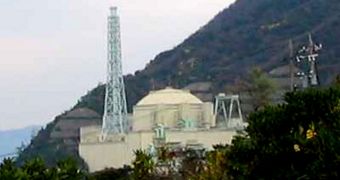The Tsuruga, Fukui Prefecture-based Monju Nuclear Power Plant contains Japan's only prototype fast breeder reactor. This is a special type of reactor that is capable of producing more fissile material than it consumes. In a nutshell, once some material is placed inside, and the machine is turned on, no additional amounts of the stuff need ever be used. The technology holds great promise and was heavily researched several decades ago, but only a handful of FBR remain to this day, of which Japan's is one of the most advanced, ScienceNow reports.
Some 14 years ago, the Monju FBR suffered from a leak that prompted great concern and forced authorities to shut the facility down indefinitely. On December 8, 1995, a pipe gave way and allowed for hundreds of kilograms of sodium to drip onto the floor below. After it reacted with water and the oxygen in the air, the chemical turned into caustic fumes and blistering temperatures of up to several hundred degrees Celsius. Various misunderstandings allowed for the situation to persist for longer than normal, until eventually three tons of solidified sodium were found in the affected section of the reactor. A botched cover-up ensued, and this complicated matters even more.
Yesterday, May 6, with the goal of wider commercialization in mind, Japanese authorities reopened the facility. “Building on the many lessons of these 14 years, we will ensure safety as the highest priority for Monju while striving to enhance the transparency of our operations,” said on the occasion in a statement Toshio Okazaki, who is the president of the Japan Atomic Energy Agency (JAEA). The final decision rested on the governor of Fukui Prefecture, who eventually agreed to allow the reactor be turned back on.
“Safety, economic and nuclear proliferation issues are being ignored for purely bureaucratic reasons,” protested on its website the Citizens' Nuclear Information Center, which is based in Tokyo. The group is joined by other, which also feels that the machine should have been left turned off. However, authorities mention that this is the only FBR in the world to have ever achieved criticality, which is basically when a fast neutron reactor produces more fissile material than is inserted at the beginning of the reaction.
Between the 1970’s and 1990’s, many countries, including France, Russia, the United States, Germany, and the United Kingdom, attempted to construct such reactors. The prospect of a facility producing more plutonium than it consumes attracted many politicians and scientists, as FBR could potentially be used as supply points for nuclear fuel, to be employed in other fields of research. However, all nations, except for Japan, abandoned the technology mostly due to technical problems, costs, and concerns about safeguarding plutonium, which is used in nuclear weapons.

 14 DAY TRIAL //
14 DAY TRIAL //